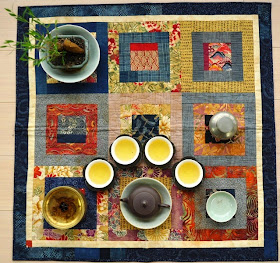Depuis la capitale de Taiwan, je remercie la mairie de Paris pour sa proposition d'interdire les feux de cheminée. Voilà une chance de plus d'habiter Taiwan, où il est encore autorisé de faire du feu pour son plaisir. Cette interdiction est aussi l'opportunité de nous rappeler en quoi le feu est fondatelement humain.
Dans la
Psychanalyse du Feu,
Gaston Bachelard écrit: «la contemplation du feu nous ramène aux origines mêmes de la pensée
philosophique». C'est autour du feu, depuis la nuit des temps, le nez dans les étoiles, que nos lointains ancêtres ont envisagé l'univers et se sont racontés des histoires sur nos origines. En effet, le feu permet «dégager les dialectiques alertes qui donnent à
la rêverie sa vraie liberté et sa vraie fonction de psychisme
créateur».
Voilà pourquoi il y a un tel plaisir à faire un feu, surtout en ces temps électriques, où la température se contrôle au degré près. Il nous ramène à ces veillées d'antans, près d'une cheminée, quand l'esprit s'ouvrait au mystère de la nuit et raffolait d'histoires et de rêveries.
Proche du solstice d'hiver, il fait sombre de plus en plus tôt. Cet après-midi froid et gris, j'ai une envie de noire douceur. J'opte donc pour mon
Jingua Gongcha, un puerh cuit de 25 ans.
Pour l'infuser, je choisis une petite théière Yixing en glaise hungni et de forme Shuiping, au bec long et droit. Sa petite taille me permet de ne pas utiliser trop de feuilles pour cette session.
Ci-dessus, vous avez un ordre d'idée du rapport entre les feuilles et la taille de la théière. Comme la couleur de l'infusion est très sombre, il est moins important de bien observer sa transparence. Aussi, ce n'est pas un problème d'utiliser des coupes qinghua décorées à l'intérieur.
Les feuilles sont dans ma main et ce premier contact charnel avec le thé est le départ d'une liaison très intime, littéralement fusionnelle!
L'eau frémit déjà (de plaisir?)
Les volutes partent en fumée par temps froid.
Aussi, il est bien important de préchauffer les coupes à chaque infusion, surtout celles-ci car elles sont un peu épaisses et absorbent rapidement la chaleur du thé.
De près ou de loin, harmonie et beauté règnent. Que de belles vues à partager.
Entre deux infusions, il faut parfois alimenter le feu. Des baguettes en métal permettent de ne pas se salir les doigts et d'effectuer cette opération avec précision.
L'éventail en plumes ravive les braises.
Et si l'eau vient à manquer, cette aiguière de David Louveau permet d'en rajouter un peu. En effet, il ne faut pas en mettre trop à la fois sinon l'eau mettrait trop longtemps à retourner au point d'ébullition.
Le crépitement des braises s'atténue doucement.
L'esprit du thé semble se manifester dans ces effluves. Un génie libéré m'accorde mes 3 voeux.
1. Des infusions concentrées, aux couleurs profondément sombres et mystérieuses, mais toujours brillantes et transparentes.
2. Des senteurs pures de vieil encens raffiné.
3. Un goût épais, mais pur, doux et chaleureux qui donne une sensation de bien-être et de relaxation à tout le corps.
Les infusions se succèdent et se prolongent de plus en plus. Le plaisir est sans cesse renouvelé. Le feu de charbon dégage une odeur dans toute la pièce. Ma rêverie métaphysique se mue en désir créatif. Un tel spectacle est fait pour être immortalisé et partagé avec tous les passionnés de gongfu cha.
Les cendres blanches rougissent encore un peu. La fin de cette session est proche. Vivement la prochaine!






















 .
.































